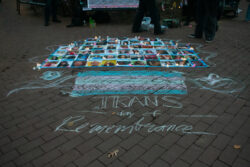The recently announced contract between the University and Solar City, a solar power company, is bringing change to students’ utility bills, GUSA’s budget, and Georgetown’s environmental impact, as well as opening the door to future renewable energy projects on campus.
The project is part of the Student Activity Fee Endowment reform passed by GUSA last year. One of the three proposals from SAFE reform brought forward by Georgetown Energy allocated $250,000 to Georgetown Energy to install solar panels on 43 University townhouses. The group was initially started “to consult local neighbors about going solar,” said Dan Mathis (SFS ‘13), the group’s executive officer and head of the solar project. With the reform, “we realized we could make a difference with the amount of money that was available to students” Mathis said.
The current plan is to install panels on seven townhouses for a total cost of $45,000. Although the proposal originally called for installation on 43 houses, the age and design of many of the roofs decreased the viability of that project. “The way a solar panel works, it clamps onto the seams, but if it’s a certain material you can’t clamp–you have to drill, which has liability issues,” Mathis said. “So, they cut it back to seven which they knew had had their roofs replaced in the last fifteen years.”
As a part of this project, students in townhouses will no longer pay a variable electric bill. “The main change is a new housing billing structure that was implemented this fall, under which townhouse students pay a flat fee for housing each semester, similar to students in Georgetown’s other on-campus housing,” wrote Audrey Stewart, Director of the Office of Campus Sustainability, in an email to the Voice.
“Before what [the University] would do is send the utility bill after a couple months to the students,” Mathis said. “The way the model is setup to work there is a fixed payment for each student who lives in the house. That payment is going to based on the average of the last 20 or 30 years.”
The difference between the payments students make and the electric bill for the townhouses with solar panels will go to GUSA’s Student Activities Fund. “The project is expected to generate about $82,000 in revenue to GUSA over the 20-year life of the project, or about $3,000 per year during the first several years, with increases in the future as regional electricity rates rise,” wrote Stewart.
The contract was awarded through a competitive bidding process. “We sent out requests for proposals to a bunch of solar providers, and we had a few companies come back. It’s a pretty specialized industry,” said Colton Malkerson (COL’ 13). Solar City and one other company responded with proposals. “All the students, GUSA, myself, Georgetown Energy, and facilities looked at all the proposals,” Malkerson said. “We determined Solar City was the best.”
“This week, the solar program will be submitted to the [Advisory Neighborhood Commission] and [Old Georgetown Board],” Malkerson said. “Essentially, we are expecting a really smooth regulatory approval process. OGB is primarily concerned about how it will look and you really can’t see the solar panels.”
The presentation before the ANC and OGB will be made by Solar City. The company did not respond to requests for comment before the Voice went to press, but “Georgetown representatives both from facilities and students will be there when they present to make sure everything goes smoothly,” Malkerson said.
“In total, the project is expected to provide about 20,250 kwh each year – about one third of the total electricity needs for these residences, or enough electricity to power two full average U.S. homes,” Stewart wrote.
Stewart sees the project as a chance to develop a model for future proposals. “On campus, this project will serve as a valuable pilot from which lessons can be applied to future sustainability projects, such as those to be supported by the student Green Fund,” Stewart wrote.
Although the remaining $205,000 of the green fund cannot be allocated until the planned panels are installed, Mathis said Georgetown Energy is full of ideas for the money once it becomes available. “Overall, we’re trying to partner with the sustainability office with what they’re doing to see how we can make a difference with projects going forward.”





